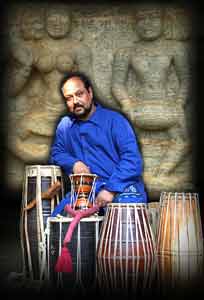The mainstream dance world today is fused with the Western, the known and unknown, borrowing from many cultural sources. While contemporary mainstream choreography is infused with moves from cultures of the world, the Sinhalese dance-forms of the Kandyan, Low Country and Sabaragamu traditions have very limited exposure outside rural or ritual settings. Nowadays dance diversity is emphasized on television, through mainstream ‘reality’ shows which have little room for adopting the traditional performing arts of different cultures.
On February 7, the Lionel Wendt hosted a Kala Eli Mangallaya (Graduation Performance) of four promising young Kandyan dancers attached to Prof. Mudiyanse Dissanayake’s Chalana Ranga Peeta. What struck me about the recital was the way a skilled choreographer adapts traditional dances performed in open air settings, to the stage, retaining its intricacy, without having to resort to fusion or indeed distortion.
It contrasts verily with some current day deviations from tradition and technique that seem to lead to deformed or even derogatory contemporary dances. There is something so raw and exciting about our traditional dances. The cleverness lies in not camouflaging it for the stage so much that it loses its flavour. This clever choreographer achieves the perfect mix.
This year Prof. Dissanayake completes thirty five years as a traditional dance exponent and performer of both traditional dance forms. He is an artiste capable of retaining aesthetic expectations and complex interactions of these unique dances on stage. The dance items that amazed me the most – like all good things had to be waited for – coming in the latter part of the programme.
The first of the three was a combination of the Vané Yakkama and Yak Tun Padaya - complex parts of the Kohomba Yak Kankariya (a fertility ritual propitiating the Demon Kohomba). Those of us who have attended Sinhalese weddings or seen Peraheras would be familiar with Ves dancers perhaps the most recognised icon of Kandyan dance in white skirted and silver head-dressed splendour. Here young Ves dancers preserved the vigorous footwork and drumming of the original ritual which is danced open air, in the village threshing floor. There was emphasis on an enfolding ‘conversation between the drummer and dancer’, with dancers ‘showing off’ their prowess to the drummer and vice-versa.
The item inspired by the Hath Thaala (loosely seven rhythms), demurely costumed in cream hues, was striking in its intricacy. The Hath Thaala reflected dignity and grace. It also contained a fascinating phase of mudras, where the dancers’ darting arms and cryptic gestures conveyed a sense of ritual magic.
I must add that the young lasses in question, twins Ashanthi and Nishanthi, Nadeera and Thivanka were stupendous in a Devol dance (usually relegated to male dancers), giving a rendition with such vigour and precision that the audience was held spellbound.
My favourite, the adaptation of Sathara Vattam came last in the agenda. Cleverly choreographed and costumed, four couples came on stage in succession, the first entering from the rear of the auditorium, the second from the rear of the stage and so on, having a ‘conversation in rhythm.’ The conversation unfolding demarcated the four Vattams.
Vattam in the Tamil/ derived from the Sanskrit Vrutta denotes circle, in this context perhaps meaning the inherent rhythm. For most of us the four couples seemed to babble in a birdlike and incomprehensible way before launching into the dances, but the exponent would have been able to reiterate the four Vattams as Kundaanta Gata Dom, Dom Jinta, Go Go Jin Jin Gata and Kunda Kunjin Gata; thus a colourful coordination of dancing and drumming unfolded on stage.
A show such as this really expands the boundaries of traditional dance. It shows that with a little thought and empathy that it can be brought to new audiences. I am gratified by the performance and wish the maestro - Prof. Dissanayake - many more years of dance. |

